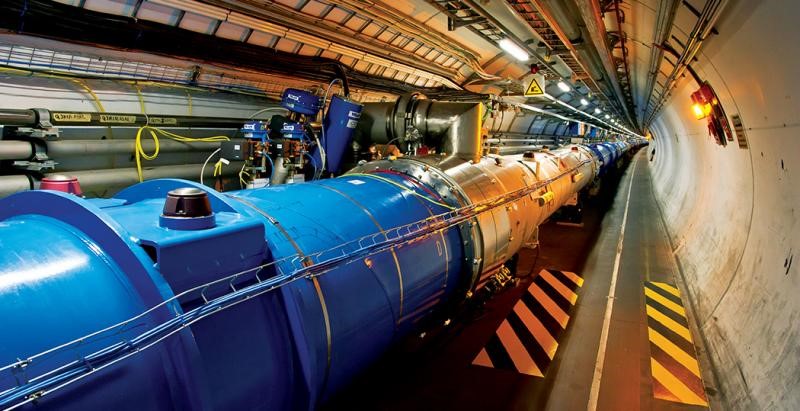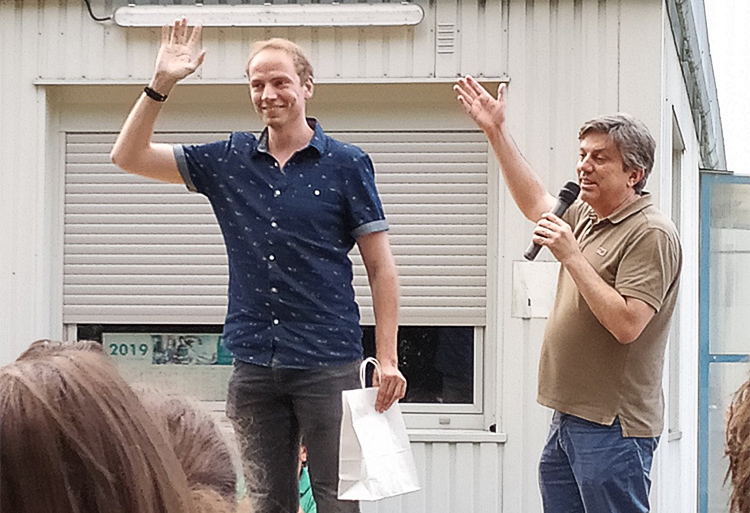Jacco de Vries wins thesis award on complex matter
With his paper, Jacco de Vries demonstrated that an interesting outcome from earlier research was unfortunately just a coincidence. This resulted in winning the prize for the best thesis at the Large Hadron Collider from CERN.
De Vries research is mainly about ‘beauty particles’. These are the heaviest particles we can make: they contain a heavy "beauty" quark. De Vries explains: “These particles are still relatively poorly studied because it takes so incredible amounts of energy to make them.
At the same time, these heavy particles play a huge role in the early universe. That is why we think these particles can provide us with the best insight into what physics played a role in the early universe.
Solving one of the greatest mysteries of the universe
“The strange thing is that when we make new matter at particle accelerators, we always make exactly the same number of particles as anti-particles.” De Vries goes on: “We think that the same thing must have happened during the big bang: from energy both particles and anti-particles arise, in exactly equal amounts. But we are unable to find any trace of anti-particles in the entire universe. Where have they all gone? Understanding this imbalance is one of the greatest mysteries of the origin of the universe".
A solution to this imbalance can be that particles and anti-particles are not entirely mirror images of each other: there would then be a slight difference between the behaviour of one particle and another. This would cause ‘asymmetry’, that might be the basis for explaining the imbalance between matter and anti-matter.
Hint turned out to be just a coincidence
"That is why I compared these ‘mirror image versions’ of a certain process, called ‘mixing’, to each other. In the mixing process, particles themselves change towards their anti-versions, and back again. To put it simple: if this goes faster one way than the other, then we would have hit the jackpot...Unfortunately, we have found that, within the statistical uncertainty, these processes go both ways just as quickly”. This way De Vries was able to conclude that the hint of the DZero experiment was only a coincidence.
What exactly is anti-matter?
Anti-matter is a kind of mirror image version of normal matter: there is an anti-particle for every particle. This sounds very ‘exotic’, but that is just because there is so little of them on earth. But we sometimes use it in hospitals, for example, in PET scans: Positron Emission Tomography. A positron is an anti-electron.
Of course we should be happy that more matter than anti-matter remains, because otherwise we, the earth and the stars around us could not have existed. When anti-matter and matter meet, they explode in a kind of flash of light. But understanding this imbalance is one of the greatest mysteries of the origin of the universe, and bears the heavy name "baryogenesis."
Maastricht University and the LHCb Experiment at CERN

With the establishment of the new faculty, Science and Engineering, UM officially joined the Nikhef partnership. And with that, a collaboration with the particle physics center of the Netherlands at CERN. De Vries explains: “In that sense, Maastricht is part of the LHCb experiment which brings cool opportunities. For example: students at Maastricht Science Programme can do projects with data analysis and machine learning on data from CERN, under the supervision of a CERN scientist: myself. De Vries is currently the only UM scientist with access to CERN data.
LHCb - The Beauty Experiment - A short documentary on the LHCb experiment, on the quest for the mystery of anti-matter.
Photo Jacco receiving prize: Patrick Koppenburg
Photo 'News & Events: CERN
